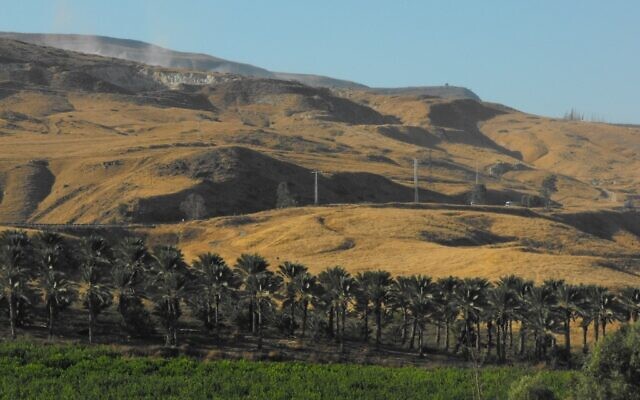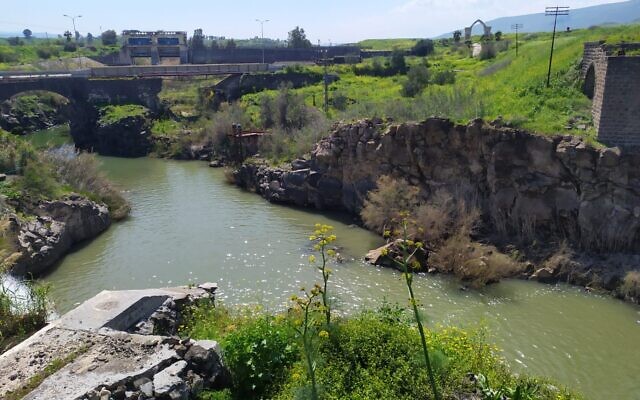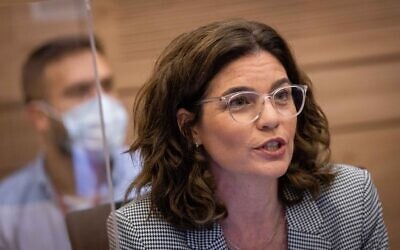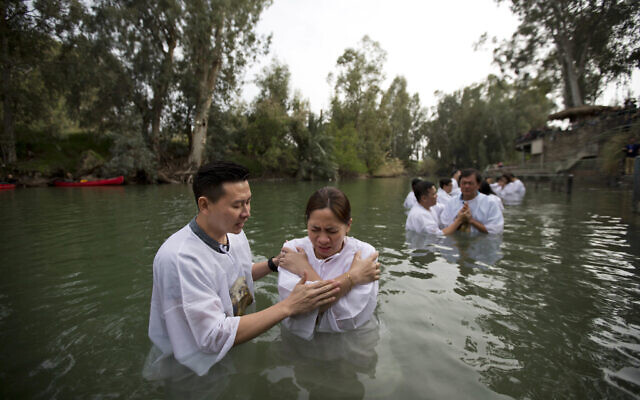The government has approved an ambitious plan to clean up a substantial stretch of the Jordan River, restore its once abundant nature, and develop tourism along its banks.
The segment of river to undergo rehabilitation, all of which is located within Israeli territory, runs from the Sea of Galilee to the point where the river meets the Bezek Stream, around 37 kilometers (23 miles) to the south. The plan was approved Sunday.
South of the Bezek Stream, the river starts to define the Israeli-Jordanian border.
The Jordan Valley — part of the great Syrian-African Rift Valley — was a major highway for the migration of early humans between Africa, Europe, and Asia, and is still a key migration route for animals, particularly birds.
The river and its banks form the backdrop for many stories and traditions held central to Judaism, Christianity, and Islam.
And yet, south of the Sea of Galilee, it has been reduced to a polluted trickle, its once gushing waters diverted for use by all the peoples living close by.
The stretch earmarked for the upgrade has suffered not only from the drastic reduction of freshwater from the Sea of Galilee, which currently stands at a mere 30 million cubic meters per year. Some 1.2 billion cubic meters flowed south from the lake until Israel built a dam at its southern end in the 1960s.
A dog swims in the water as trees stand where dry land was in the Sea of Galilee, locally known as Lake Kinneret on April 25, 2020. After an especially rainy winter, the Sea of Galilee in northern Israel is at its highest level in two decades.(AP Photo/Ariel Schalit)
Wastewater treated to a relatively low standard has been flowing into the river bed from a nearby treatment facility, along with salty water pumped from saltwater springs beneath the Sea of Galilee to keep the lake from becoming too saline.
The Water Authority’s plan for the region has two main components.
The first is to stop the entry of the waste and salt water into the river and to gradually release more freshwater into it from the Sea of Galilee, up to a total maximum of 70 million cubic meters annually.
This will allow visitors to safely swim in this part of the river again and is expected to help rehabilitate the ecosystems in the river and on the banks.
The second component of the plan is to reuse and redistribute the freshwater, salty, and treated water for farmers in the Jordan Valley.
Climatic and soil conditions, along with the crops that can be grown and their specific water needs, vary greatly the further south one travels from the Sea of Galilee.
A variety of crops and fruits can be grown in the area closer to the lake, some of them needing fresh water for irrigation, rather than the salty water naturally available nearby.

Mixed plantings at Kibbutz Gesher in the Beit Shean Valley south of the Sea of Galilee, Ilana Shkolnik, CC BY 2.5, PikiWiki Israel, Wikimedia Commons)
Further south, towards the Dead Sea, agriculture becomes more focused on date palms, which thrive in saline water.
According to the new plan, the freshwater flowing down the rehabilitated section of the Jordan River will be pumped out at different points along the way and sold to farmers for their freshwater cultivation.
In addition, a new pipe will be built, parallel to the Jordan River, to carry treated wastewater and around seven million cubic meters of desalinated spring water each year to farmers.

The Jordan River. (Southern Jordan Drainage Authority)
The desalination will be carried out at a terrestrial desalination facility to open in the Jordan Valley in around three years.
Initial planning is being carried out for a second desalination plant closer to the Dead Sea.
The infrastructure for this new system will be financed through the charges farmers pay for water, the plan said.
Other ministries, such as those of environmental protection and tourism, will foot the bill for rehabilitating the ecosystems and creating tourist facilities on the river banks.

Environmental Protection Tamar Zandberg attends a committee meeting, in the Knesset, in Jerusalem on November 15, 2021. (Yonatan Sindel/Flash90)
The plan was approved by the Water Authority last year but was announced this week at the initiative of Tamar Zandberg, the Environmental Protection Minister, who is to leave politics in November when elections are held.
It was signed by Zandberg, as well as Prime Minister and Foreign Minister, Yair Lapid, Regional Cooperation Minister, Issawi Frij, Energy Minister Karin Elharrar, and the Water Authority, in partnership with the Nature and Parks Authority, the South Jordan and Kinneret Drainage Authorities, the Jordan Valley and Valley of Springs (Emek HaMaayanot) regional councils, the Kinneret Emakim cluster of local authorities, and the Ecopeace not-for-profit organization, that has been campaigning for years to rehabilitate the Jordan Valley.
None of the additional water will reach the Dead Seasome 96 kilometers (60 miles) further south. That body of water has shrunk by half since the mid-1970s thanks to the paucity of water that enters it from the Jordan River and the pumping out of water for the extraction of minerals by companies on the Israeli and Jordanian shores.

Indonesian priests baptize Christian pilgrims in the Jordan river at Yardenit baptismal site in Israel, Friday, March 17, 2017. (AP Photo/Dusan Vranic)
Nor will it reach the Qasr al-Yahud baptism site, where the Water Authority is hoping to find a site-specific solution to raise the water level.
